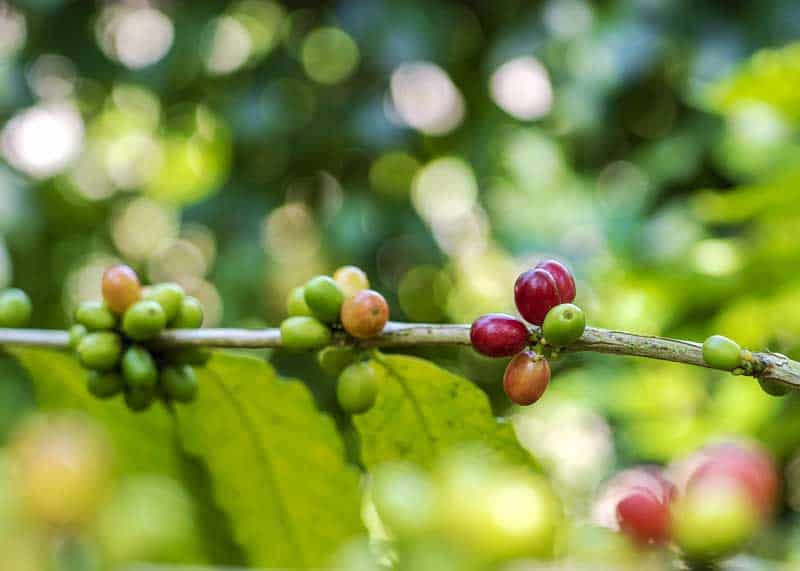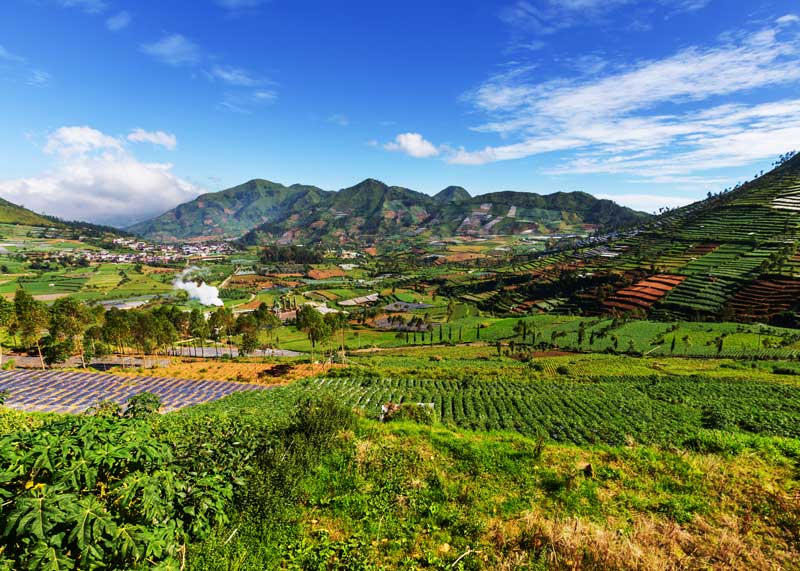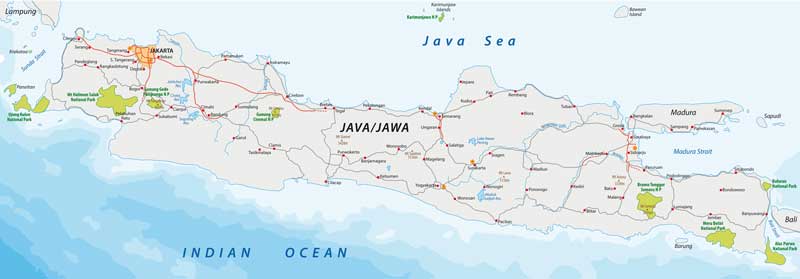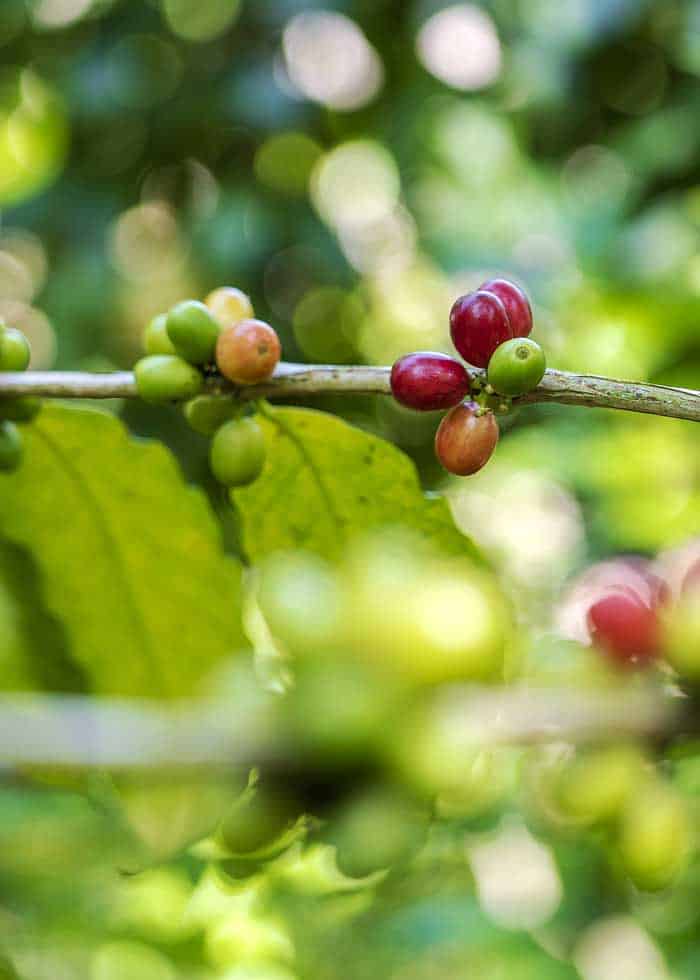The origin story of java coffee is a tale of smuggling, colonization, and exportation. What is java coffee? And why is coffee called java? Learn the story of your favorite drink in this quick history.
The term java, which is used to describe coffee, originates from the island of Java, Indonesia. The Dutch smuggled coffee seedlings to Indonesia to expand the lucrative trade that coffee exportation brought. The exportation of coffee by the Dutch helped to make coffee a worldwide commodity.

If that isn’t enough to satisfy your curiosity on how the Dutch made such a lucrative business on coffee beans alone, read on. We’ll explore the history below so grab a cup of coffee and enjoy the read!
Coffee in Arabia
Before we can fully explore how coffee became commonly known as java, we have to go back to the Ottomans living in the mid-1500s.
The Ottomans, who lived across Arabia, had the most power and influence over the spice trade. Traders from Europe and Asia would use the spice trade to enhance the wares they had to offer their countries. One product was coffee.
During this time, the Ottomans had complete control over the exportation and cultivation of coffee beans, and they wanted to keep that monopoly.
The blend of coffee that was made in Arabia was referred to as Mocha, which refers to its origin in Yemen.
After making the coffee, brewers would de-fertilize the seeds to ensure other traders could not make a profit from the seeds.
Obviously, they didn’t want other powerful governments to reap the benefits from such a lucrative trade.
In 1536, they tried to ban the exportation of coffee seedlings from Arabia. However, as with most lucrative enterprises, people wanted to have access to that revenue as well.
It is the Arabian origin of this coffee variety (Coffea arabica) that gave it the common name Arabica.
Dutch East India Company
In the 1600s, the Dutch East India Company’s power was relatively small. However, they were about to grow into a global, economic power.
The Dutch East India Company established colonies in India, but also in Indonesia, creating colonies that could create revenue for them.
They ignored the bans set by the Ottomans and smuggled some coffee seedlings out of Arabia.
Once they had obtained these coffee seedlings, they first tried to establish coffee plantations in India. These attempts were unsuccessful because coffee grows best in tropical areas.
In 1616, they created a coffee plantation in Sri Lanka with some success, but not enough to produce profitable revenue.

In 1696, the Dutch East India Company took political and economical control over Java, Indonesia, due to the failure of the local government.
Here’s more about the economics and power of the Dutch East India Company.
Coffee Plantations in Java
After obtaining control over the local government, the Dutch East India Company created plantations to grow the most valuable and lucrative commodities.
Although this proved to be very profitable, the livelihoods of those living in Java were affected.
Instead of growing the staple crops they needed, such as rice, they were forced to grow sugar cane, indigo, and coffee trees. These three goods were all wanted globally, which only increased the power of the Dutch East India Company.
Coffee, in particular, became one of the most sought-after goods that the Dutch East India Company offered. Before this point, coffee was mainly confined to the Arabian countries because of their complete domination over the trade.
Once the Dutch East India Company created successful plantations, coffee was more widely introduced to Southeast Asia and then to Europe in 1711.

Originally, coffee plantations were built only on Java. As trade expanded and the profits continued to grow, the Dutch East India Company expanded their plantations to the islands of Sumatra and Celebes. This trade continued even after the Dutch East India Company lost power.
Because the trade became so lucrative in Java, coffee began to be referred to as java. Even though coffee is not as commonly referred to as java now, the name hearkens back to how it became such a popular drink.
This is true for many coffee names.
Why Coffee is Called “A Cup of Joe”
The term “a cup of joe” is slang for the term Jamoke. And the word “jamoke” is a hybrid of the java and mocha blend.
Even though Java is no longer the main supplier of coffee in today’s economy, we have this little island (and the Dutch East India Company) to thank for its rapid spread around the world.

Worldwide Commodity
The spread of coffee into Europe was almost halted because of its bitter taste. People were afraid that it was a substance of the devil.
The pope drank the coffee to see if these rumors were true. He liked it so much that he gave it his approval and coffee quickly became well-loved among Europeans.
The prevalence of coffee in the United States came about because of the wars with England. After the Americans decided to pitch tea into the sea because of taxes, they turned to coffee as another act of defiance against the king of England.
Today, coffee is still one of the most sought-after commodities. It has spread to every part of the world. Although it is not growing at the rate that it did in the 18th and 19th centuries, it is still very profitable.
In fact, it is the second most traded commodity in the world. Brazil is the largest producer of coffee beans. This illustrates just how powerful these beans are (both for economics and our palettes).
Coffee is grown around the world, from Kenya to Ecuador and from Ethiopia to Costa Rica.
In North America, you can usually find a coffee shop within walking distance. The blends of coffee have continued to be invented and improved.
Whether you have an espresso, a latte, or an iced coffee, each has an origin story of its own.

Java has become synonymous with coffee. And it’s even the origin of our name: Enjoy Java.
So, the next time you take your first good morning sip, you might take some time to think about how it came to be at your table.
Or, you might just enjoy the rich texture that comes from a well made cup of coffee.
- About the Author
- Latest Posts
Dena Haines is a co-founder and blogger on EnjoyJava – and is working to make it the best coffee blog in the world.
She also blogs about travel at Storyteller.Travel and photography at Storyteller Tech. Dena is a partner at Storyteller Media, a publishing company she started with her husband, Bryan.

Lawrence Yoder
Wednesday 1st of May 2024
Indonesia is the fourth largest country in the world, in terms of population, so it produces an immense amount of coffee just for local consumption. A widely known kind of Indonesian coffee is Sumatra Mandailing (the old spelling was Mandheling). In 1871 Mennonite churches in Russia sent some missionaries to the Dutch Indies (now Indonesia) who located in Mandailing County of North Sumatra. They planted some churches there. To improve the local economy those Russian Mennonite missionaries also planted coffee trees in the Pakantan area of Mandailing. I know about this because a hundred years later in the 1970s I was living and working in Indonesia and traveled to the Mandailing County of southern North Sumatra numerous times to connect some colleagues who were doing agricultural development work there.
I love Sumatra Mandehling coffee. I usually get it from Stone Street Coffee Company in Brooklyn, New York. But it seems that Stone Street only has Dark Roast Sumatra Mandheling coffee. I would like to find a place to get Medium Roast Sumatra Mandehling coffee.
Jason Brown
Monday 6th of September 2021
From what I understood the origin predates that as an Arab trader discovered the bean in Ethiopia.
Lawrence Yoder
Wednesday 1st of May 2024
@Jason Brown, since I am a Mennonite and have often traveled to remotely located Mandailing, and some of my university students were from Mandailing, I became interested in Sumatra Mandehling coffee. In Central Java where we lived, there are many coffee plantations. One was located about 2 km from our home. I would love to be able to get coffee from Central Java! In Central Java, when coffee is served, they put crushed roasted coffee beans in the bottom of a very small cup and then pour hot water into it, maybe with a bit of coconut. No sugar or milk/cream!!